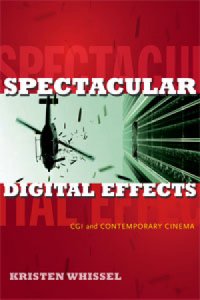Presented By: Department of Film, Television, and Media
SAC Speaker Series Presents
A Talk by Professor Kristen Whissel of UC Berkeley

“Parallax Effects: Stereoscopic 3D and the Postwar Uncanny in House of Wax (André de Toth, 1953) and Dial M for Murder (Alfred Hitchcock, 1954)”
Stereographic 3D cinema is best known for its transformation of the dimensionality of the moving image through the production of positive and negative parallax (“immersion” and “emergence” effects). Scholars tend to critique the use of negative parallax in 3D films of the 1950s, especially, as a gimmick that doomed the format to failure by disrupting narrative and and disturbing the spectator’s absorption into the fictional world of the film by foregrounding the screen as surface and threshold. This paper departs from prevailing scholarship on 3D films by situating positive and negative parallax effects along a continuum that aligns the first with the epistemological drive - the desire to see and know - and the second with an affective charge that is irreducible to the provocation of shock and surprise.The association of positive parallax and negative parallax with knowledge and affect, respectively, made stereoscopic 3D an ideal format for the cinema’s investigation into the uncanny culture and experience of technological modernity in the postwar era in 3D films such as Dial M for Murder (1953) and House of Wax (1953).
Stereographic 3D cinema is best known for its transformation of the dimensionality of the moving image through the production of positive and negative parallax (“immersion” and “emergence” effects). Scholars tend to critique the use of negative parallax in 3D films of the 1950s, especially, as a gimmick that doomed the format to failure by disrupting narrative and and disturbing the spectator’s absorption into the fictional world of the film by foregrounding the screen as surface and threshold. This paper departs from prevailing scholarship on 3D films by situating positive and negative parallax effects along a continuum that aligns the first with the epistemological drive - the desire to see and know - and the second with an affective charge that is irreducible to the provocation of shock and surprise.The association of positive parallax and negative parallax with knowledge and affect, respectively, made stereoscopic 3D an ideal format for the cinema’s investigation into the uncanny culture and experience of technological modernity in the postwar era in 3D films such as Dial M for Murder (1953) and House of Wax (1953).